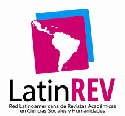Peru Brand: a Nation under Construction?
DOI:
https://doi.org/10.26439/contratexto2016.n025.653Abstract
During the last decade Peru has experienced a euphoric rediscovery –pseudo revaluation as a country– due to its booming gastronomy, tourism and economic growth.In this context, the presentresearch uses semio-psychoanalytic and postcolonial theories to explain Peru’s social outlook regarding the concept of nation, its reunion with a non-existent identity and the construction of the idea of nation based on the marketing campaign titled the Peru Brand. Thus, Peru Brand, far from uniting all Peruvians and bring them together into the wellknown “melting pot”, becomes the resemantization of the old colonial discourse longing for a republic without natives. Therefore, in the Peru Brand advertising discourse, the “primitive natives” are white people brought from Nebraska and speak English.
Downloads
Downloads
Published
Issue
Section
License
All of the works published are licensed under a CC BY 4.0 Creative Commons Attribution license. (updated on March 1st 2021)
The content of the journal may be shared in any material or format. The content may be adapted, contributed upon and transformed. Both possibilities are only permitted in so far as they complete the following conditions:
- Attribution: Credit must be given where it is due, a link to the license must be provided and changes, if made, must be indicated. This should be done in the manner deemed appropriate, without suggesting that the licensor promotes you or your use of the material.
Ownership rights
The patrimonial rights for Contratexto are published under a Creative Commons BY 4.0 license, allowing authors to keep the patrimonial rights to their work without restrictions.
If a work published in Contratexto were to be copied, distributed, spread, or any other activities contemplated in the aforementioned license, the author(s) and the journal must be mentioned visibly and expressly.
Self-archive
This journal allows and encourages authors to post items submitted to the journal on personal websites or institutional repositories both prior to and after publication, while providing bibliographic details that credit, if applicable, its publication in this journal.

















